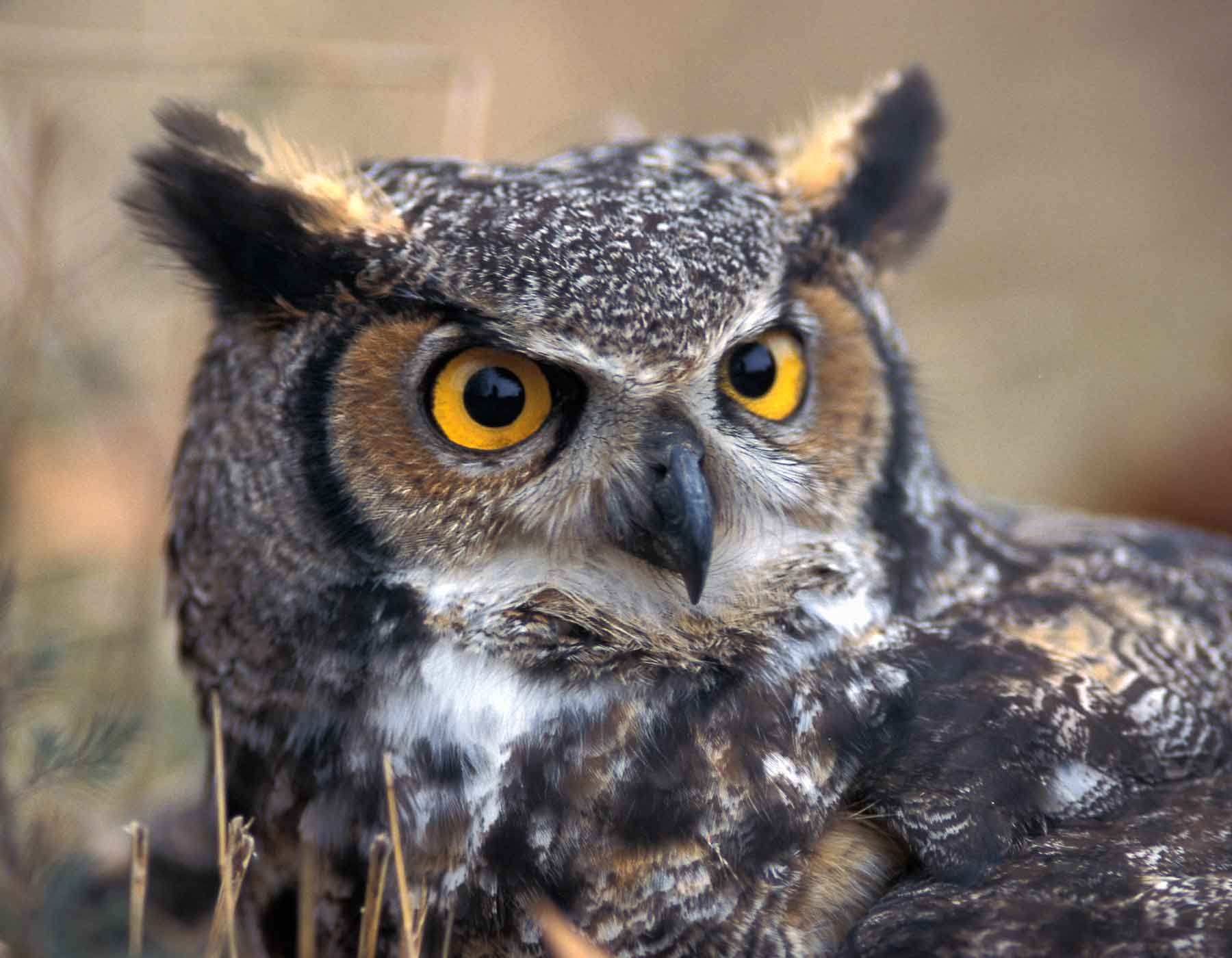As predators, owls play an important role in controlling mice, rats, and rabbits, which can become pests. In the process, they tend to select those easiest to catch — slower, weaker, or diseased — thus forging a healthier prey population.
Because one owl needs a lot of prey animals to survive, not many owls can share a given area. For this reason, owls can easily be forced toward extinction when they lose food sources, habitat, or protection from excessive hunting.

Title
How are owls related to other birds?
Owls — along with osprey, hawks, eagles, vultures and falcons — constitute a group of hunting birds called raptors. These birds have talons (sharp claws) on their toes for grasping and holding prey and hooked beaks for tearing it apart.
Title
Why are owls nocturnal?
They are adapted to hunt mice and other small mammals that are active at night. In addition, hunting at night helps owls avoid competing with hawks and eagles, which hunt during the day. Smaller owls usually forage at different times than big owls, to avoid becoming prey themselves.
Title
How do owls see?
Relatively speaking, an owl's eyes and pupils are huge and let in lots of light, producing excellent night vision. In fact, a great horned owl's eyes are nearly as large as a human's. While human eyes can move in the socket, owls' eyes are fixed and can't turn. To look at a new object, an owl must swivel its head. Owls can rotate their heads to about 270 degrees, offering them a wide range of sight. Unlike other birds' eyes, owl eyes look forward, each eye seeing the same object from two different angles. This produces three-dimensional perception, similar to human eyesight, making it easier to detect the distance of prey, perches, and branches in the dark.
Title
How do owls hear?
Owls' ear openings also are directed forward and are concealed beneath downy feathers within a feathered facial disk. (The ear tufts of some owls, such as the great horned and long-eared owls, have nothing to do with hearing.) The facial disk itself serves to focus sound waves into the ears. Strangely, the ear opening on the right is higher than the one on the left, allowing each ear to receive sound from a slightly different angle. This provides owls with stereophonic hearing in addition to 3-D vision. Experiments have shown hearing to be so effective that barn owls can locate prey in total darkness by hearing alone. Many owls can hear their prey through a foot or more of snow and can still pounce on their prey target with great precision.
Title
How do owls hunt?
To aid in nighttime hunting, owls’ soft feathers enable them to fly almost silently. This is because tiny serrations along the leading edge of flight feathers reduce the sound of flapping wings. Owls locate their prey while flying or from a perch. They fly in quickly, feet first, the talons grasping and killing the prey. Then they carry the prey (with talons or beak) to a perch or nest.
Title
How do owls eat?
They tear large items apart with talons and beak. They swallow small morsels, such as mice, whole. Hours later, they cough up indigestible bones, fur, and feathers in firm, cylindrical, 1- to 2-inch pellets. Sometimes many of these pellets can be found under a favorite perch or nest. By identifying the prey remains in the pellets, you can study the owl's food habits. For example, scientists found that pellets beneath one perch contained parts of 1,987 field mice, 656 house mice, 210 rats, 92 blackbirds, and four frogs.





















